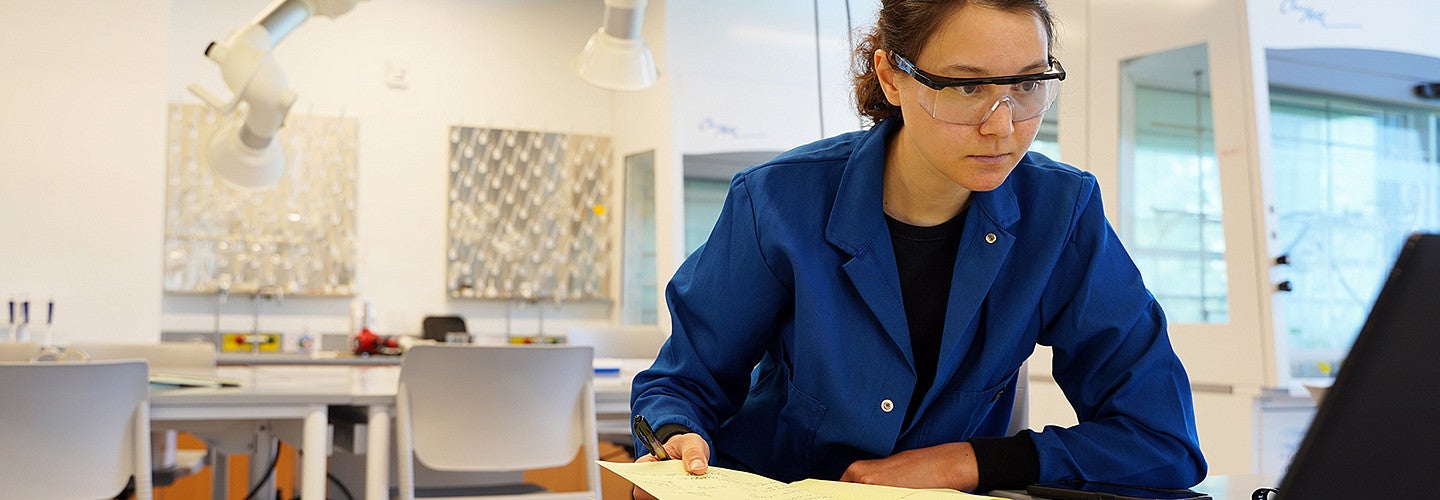
More Than Numbers
Students who complete a graduate internship work in a wide variety of roles in government, clinical, and academic labs, as well as research and development in industry. Alumni develop skills which have been successfully transferred to a wide variety of science and analyst roles. A selection of roles is highlighted below. These example positions share core competencies: significant overlap of responsibilities between different roles is possible.
Imagine Your Career in Molecular Sensors and Biotechnology
Students who complete the molecular sensors and biotechnology track work in a wide variety of chemistry and engineering roles within the life sciences, biotechnology, pharmaceutical, fragrance and materials sectors as well as peripheral sectors. The track, launched in 2019, prepares alumni for a range of chemistry, engineering and management roles- all requiring technical knowledge, communication, teamwork and the ability to quickly learn new information. A selection of career examples for Molecular Sensors and Biotechnology graduates is highlighted below.
Chemometrician: Utilizes design of experiments and statistics to evaluate resultant data from sensor data collection experiments in an effort to enhance sensor design and specifications to desired media and conditions. Example: Interpret and translate raw signals from environmental sensors into tangible data that informs users of hazardous materials.
Chemist: Synthesizes organic and inorganic compounds and/or identifies novel molecular sensor materials. This work uses a diverse array of organic and inorganic synthetic strategies and develops methodologies for characterizing the compounds and testing devices and molecular probes. Example: Develops and synthesizes a new molecular sensor capable of recognizing a new pathogen of concern for interfacing with biotechnology test kits.
Scientist or Engineer: Develops methodologies using molecular probes for both general and targeted biological imaging. Example: Employs new methods of bioconjugation (the linking of biological materials to non-biological substrates) to develop assays for virus detection.
Analytical or QC Chemist: Utilizes a variety of analytical and spectroscopic techniques to analyze and characterize fabricated sensors. Example: Uses UV-Vis and fluorimeter instruments to measure the quantum yield of a newly developed fluorescent imaging probe.
Biochemist: Develops sensor materials to recognize biological analytes including biomarkers, nucleic acids, illicit chemicals, and metabolites by synthesizing recognition units as well as testing recognition interactions between analyte and sensors. Example: Designs biomarker discovery strategies with clinical experts to identify persons with diseases such as cancer. May also characterize effects of disease treatment.
Manufacturing Chemist or Engineer: Responsible for manufacturing-scale production of organic compounds and/or custom test kits that are produced for laboratory contracts or cataloged products. Example: Use synthetic chemistry knowledge to address and troubleshoot manufacturing scale-up processes and to enhance the chemical manufacturing and development processes.
